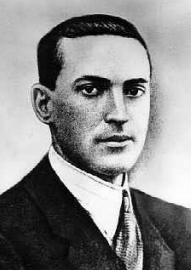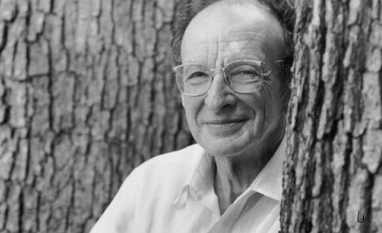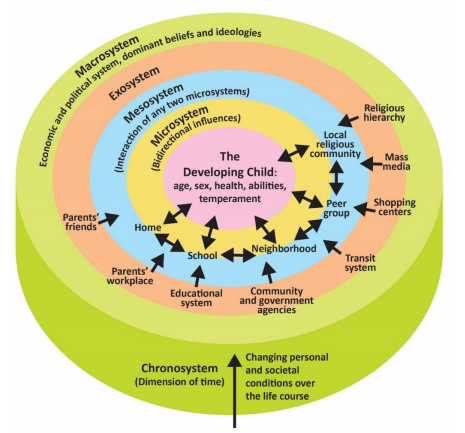3.4: Constructivism
- Page ID
- 225728
\( \newcommand{\vecs}[1]{\overset { \scriptstyle \rightharpoonup} {\mathbf{#1}} } \)
\( \newcommand{\vecd}[1]{\overset{-\!-\!\rightharpoonup}{\vphantom{a}\smash {#1}}} \)
\( \newcommand{\dsum}{\displaystyle\sum\limits} \)
\( \newcommand{\dint}{\displaystyle\int\limits} \)
\( \newcommand{\dlim}{\displaystyle\lim\limits} \)
\( \newcommand{\id}{\mathrm{id}}\) \( \newcommand{\Span}{\mathrm{span}}\)
( \newcommand{\kernel}{\mathrm{null}\,}\) \( \newcommand{\range}{\mathrm{range}\,}\)
\( \newcommand{\RealPart}{\mathrm{Re}}\) \( \newcommand{\ImaginaryPart}{\mathrm{Im}}\)
\( \newcommand{\Argument}{\mathrm{Arg}}\) \( \newcommand{\norm}[1]{\| #1 \|}\)
\( \newcommand{\inner}[2]{\langle #1, #2 \rangle}\)
\( \newcommand{\Span}{\mathrm{span}}\)
\( \newcommand{\id}{\mathrm{id}}\)
\( \newcommand{\Span}{\mathrm{span}}\)
\( \newcommand{\kernel}{\mathrm{null}\,}\)
\( \newcommand{\range}{\mathrm{range}\,}\)
\( \newcommand{\RealPart}{\mathrm{Re}}\)
\( \newcommand{\ImaginaryPart}{\mathrm{Im}}\)
\( \newcommand{\Argument}{\mathrm{Arg}}\)
\( \newcommand{\norm}[1]{\| #1 \|}\)
\( \newcommand{\inner}[2]{\langle #1, #2 \rangle}\)
\( \newcommand{\Span}{\mathrm{span}}\) \( \newcommand{\AA}{\unicode[.8,0]{x212B}}\)
\( \newcommand{\vectorA}[1]{\vec{#1}} % arrow\)
\( \newcommand{\vectorAt}[1]{\vec{\text{#1}}} % arrow\)
\( \newcommand{\vectorB}[1]{\overset { \scriptstyle \rightharpoonup} {\mathbf{#1}} } \)
\( \newcommand{\vectorC}[1]{\textbf{#1}} \)
\( \newcommand{\vectorD}[1]{\overrightarrow{#1}} \)
\( \newcommand{\vectorDt}[1]{\overrightarrow{\text{#1}}} \)
\( \newcommand{\vectE}[1]{\overset{-\!-\!\rightharpoonup}{\vphantom{a}\smash{\mathbf {#1}}}} \)
\( \newcommand{\vecs}[1]{\overset { \scriptstyle \rightharpoonup} {\mathbf{#1}} } \)
\( \newcommand{\vecd}[1]{\overset{-\!-\!\rightharpoonup}{\vphantom{a}\smash {#1}}} \)
\(\newcommand{\avec}{\mathbf a}\) \(\newcommand{\bvec}{\mathbf b}\) \(\newcommand{\cvec}{\mathbf c}\) \(\newcommand{\dvec}{\mathbf d}\) \(\newcommand{\dtil}{\widetilde{\mathbf d}}\) \(\newcommand{\evec}{\mathbf e}\) \(\newcommand{\fvec}{\mathbf f}\) \(\newcommand{\nvec}{\mathbf n}\) \(\newcommand{\pvec}{\mathbf p}\) \(\newcommand{\qvec}{\mathbf q}\) \(\newcommand{\svec}{\mathbf s}\) \(\newcommand{\tvec}{\mathbf t}\) \(\newcommand{\uvec}{\mathbf u}\) \(\newcommand{\vvec}{\mathbf v}\) \(\newcommand{\wvec}{\mathbf w}\) \(\newcommand{\xvec}{\mathbf x}\) \(\newcommand{\yvec}{\mathbf y}\) \(\newcommand{\zvec}{\mathbf z}\) \(\newcommand{\rvec}{\mathbf r}\) \(\newcommand{\mvec}{\mathbf m}\) \(\newcommand{\zerovec}{\mathbf 0}\) \(\newcommand{\onevec}{\mathbf 1}\) \(\newcommand{\real}{\mathbb R}\) \(\newcommand{\twovec}[2]{\left[\begin{array}{r}#1 \\ #2 \end{array}\right]}\) \(\newcommand{\ctwovec}[2]{\left[\begin{array}{c}#1 \\ #2 \end{array}\right]}\) \(\newcommand{\threevec}[3]{\left[\begin{array}{r}#1 \\ #2 \\ #3 \end{array}\right]}\) \(\newcommand{\cthreevec}[3]{\left[\begin{array}{c}#1 \\ #2 \\ #3 \end{array}\right]}\) \(\newcommand{\fourvec}[4]{\left[\begin{array}{r}#1 \\ #2 \\ #3 \\ #4 \end{array}\right]}\) \(\newcommand{\cfourvec}[4]{\left[\begin{array}{c}#1 \\ #2 \\ #3 \\ #4 \end{array}\right]}\) \(\newcommand{\fivevec}[5]{\left[\begin{array}{r}#1 \\ #2 \\ #3 \\ #4 \\ #5 \\ \end{array}\right]}\) \(\newcommand{\cfivevec}[5]{\left[\begin{array}{c}#1 \\ #2 \\ #3 \\ #4 \\ #5 \\ \end{array}\right]}\) \(\newcommand{\mattwo}[4]{\left[\begin{array}{rr}#1 \amp #2 \\ #3 \amp #4 \\ \end{array}\right]}\) \(\newcommand{\laspan}[1]{\text{Span}\{#1\}}\) \(\newcommand{\bcal}{\cal B}\) \(\newcommand{\ccal}{\cal C}\) \(\newcommand{\scal}{\cal S}\) \(\newcommand{\wcal}{\cal W}\) \(\newcommand{\ecal}{\cal E}\) \(\newcommand{\coords}[2]{\left\{#1\right\}_{#2}}\) \(\newcommand{\gray}[1]{\color{gray}{#1}}\) \(\newcommand{\lgray}[1]{\color{lightgray}{#1}}\) \(\newcommand{\rank}{\operatorname{rank}}\) \(\newcommand{\row}{\text{Row}}\) \(\newcommand{\col}{\text{Col}}\) \(\renewcommand{\row}{\text{Row}}\) \(\newcommand{\nul}{\text{Nul}}\) \(\newcommand{\var}{\text{Var}}\) \(\newcommand{\corr}{\text{corr}}\) \(\newcommand{\len}[1]{\left|#1\right|}\) \(\newcommand{\bbar}{\overline{\bvec}}\) \(\newcommand{\bhat}{\widehat{\bvec}}\) \(\newcommand{\bperp}{\bvec^\perp}\) \(\newcommand{\xhat}{\widehat{\xvec}}\) \(\newcommand{\vhat}{\widehat{\vvec}}\) \(\newcommand{\uhat}{\widehat{\uvec}}\) \(\newcommand{\what}{\widehat{\wvec}}\) \(\newcommand{\Sighat}{\widehat{\Sigma}}\) \(\newcommand{\lt}{<}\) \(\newcommand{\gt}{>}\) \(\newcommand{\amp}{&}\) \(\definecolor{fillinmathshade}{gray}{0.9}\)- Explain the key principles of constructivist learning theory.
- Compare and contrast the cognitive development theories of Jean Piaget and Lev Vygotsky.
- Describe Bronfenbrenner’s ecological systems theory and Thelen’s dynamic systems theory as constructivist frameworks that emphasize the role of context and interrelated systems in child development.
Constructivism
Constructivism is an umbrella for theories of learning based on the idea that learners do not acquire knowledge and understanding by passively perceiving it. Instead, learners need to interact with it through direct experience and social engagement. Some notable constructivists include:
- Jean Piaget- Theory of Cognitive Development
- Lev Vygotksy- Sociocultural Theory
- Urie Bronfenbrenner- Ecological Systems Theory
- Esther Thelen- Dynamic Systems Theory
Bronfenbrenner's theory could also be classified as Behaviorism, depending on the perspective taken, as it has overlap within both umbrella terms.
Jean Piaget’s Theory of Cognitive Development

| Video | Video Description and Text Link |
|---|---|
|
A schema is a cognitive framework or concept that helps organize and interpret information. Jean Piaget, who coined the term, argued that we construct our experiences into schemata so we can make sense of the world. Piaget's Schema: Accomodation and Assimilation of New Information by Sprouts Text link: https://www.youtube.com/watch?app=de...&v=EYbCE1udazw |
| Name of Stage | Description of Stage |
|---|---|
| Sensorimotor Stage | During the sensorimotor stage, children rely on using their senses and motor skills. From birth until about age 2, the infant learns about objects by tasting, smelling, touching, hearing, and moving them around. This is a real hands-on type of knowledge. |
| Preoperational Stage | In the preoperational stage, children from ages 2 to 7 become able to think about the world using symbols. A symbol is something that stands for something else. The use of language, whether in the form of words or gestures, facilitates understanding and communication about the world. This is the hallmark of preoperational intelligence and occurs in early childhood. However, these children are preoperational or pre-logical. They still do not understand how the physical world operates. They may, for instance, fear that they will go down the drain if they sit at the front of the bathtub, even though they are too big. |
| Concrete Operational | Children in the concrete operational stage, between the ages of 7 and 11, develop the ability to think logically about the physical world. Middle childhood is a time of understanding concepts such as size, distance, and the constancy of matter, as well as cause-and-effect relationships. A child knows that a scrambled egg is still an egg and that 8 ounces of water is still 8 ounces no matter what shape of glass contains it. |
| Formal Operational | During the formal operational stage, children, around age 12, acquire the ability to think logically about both concrete and abstract events. The teenager who has reached this stage can consider possibilities and contemplate ideas about situations that have never been directly encountered. A more abstract understanding of religious ideas, morals, ethics, and abstract principles, such as freedom and dignity, can be considered. |
Criticisms of Piaget’s Theory
Piaget's Stages at Work
Using visual aids and photo representations of daily schedules, transitions, classroom rules, learning activities, etc., all stem from Piaget's thoughts about how children think in the pre-operational stage.

Figure \(\PageIndex{2}\): Classroom rules visual aid. Image by Heather Carter is licensed CC BY-SA 4.0.
Lev Vygotsky’s Sociocultural Theory

ZPD and Scaffolding at Work
| Video | Video Description and Text Link |
|---|---|
|
It can be super frustrating to learn something new! We’ve all been there. When we support our children in their zone of proximal development, then optimal learning occurs! A big part of staying in their zone of proximal development means we let them figure it out a bit and then offer support when they are stuck. We don’t expect children to learn or figure something out that is too difficult for them and also we want there to be a little bit of a challenge or else they are not actually learning anything. The Zone of Proximal Development by The Peaceful Sleeper Text link: https://youtu.be/JONHiVXrx3s |
There is a lot of modern pedagogy in working with young children centered around Piaget's and Vygotsky's work. One example of utilizing a child's zone of proximal development and scaffolding is learning to write.
- Writing starts at birth with pre-writing skills, including grasping and eye-hand coordination.
- Eventually, we encourage children to utilize writing in intentional ways that represent something, known as emerging writing.
- Transitional writing is characterized by a one-to-one relationship between the letters and sounds represented in children’s writing. For example, words like ’people’ could be spelled ’pepl’. Even though children’s writing has now reached a level where it may be read by others, providing conventional writing is still very important in writing progress. Children will learn through comparison that many letters have different sounds and that some are silent. At the same time, children will start to notice and learn about the use of punctuation and capital letters.
- From there, we introduce various activities that encourage children to use their hands and work their fine-motor muscles to support writing such as sensory play, art, blocks, puzzles, woodworking, and more.
Figure \(\PageIndex{4}\): Writing in preschool. Image by Heather Carter is licensed CC BY-SA 4.0.
Comparing Piaget and Vygotsky
Urie Bronfenbrenner’s Ecological Systems Model

| Name of System | Description of System |
|---|---|
| Microsystems | Microsystems impact a child directly. These are the people with whom the child interacts, such as parents, peers, and teachers. The relationship between individuals and those around them needs to be considered. For example, to appreciate what is going on with a student in math, the relationship between the student and teacher should be known. |
| Mesosystems | Mesosystems are interactions between those surrounding the individual. The relationship between parents and schools, for example, will indirectly affect the child. |
| Exosystem | Larger institutions such as the mass media or the healthcare system are referred to as the exosystem. These have an impact on families, peers, and schools that operate under policies and regulations found in these institutions. |
| Macrosystems | We find cultural values and beliefs in what we refer to as macrosystems. These larger ideals and expectations inform institutions that will ultimately impact the individual. |
| Chronosystem | All of this happens in a historical context referred to as the chronosystem. Cultural values change over time, as do policies of educational institutions or governments in certain political climates. Development occurs at a point in time. |

| Video | Video Description and Text Link |
|---|---|
|
A brief overview of Bronfenbrenner's ecological theory. |
Esther Thelen's Dynamic Systems Theory
Esther Thelen's (1931-2004) research focused on how babies learn to walk and interact with their surroundings. What emerged was the Dynamic Systems Theory (DST). DST is a framework for understanding how internal systems behave and change over time. Additionally, all aspects of the system, or in early childhood development, interact. The theory posits that development is non-linear in nature, but critical changes in one system can affect the others. Dynamic Systems Theory helped prompt the understanding that we need to teach and consider the "whole child" because learning and development across all domains are interrelated.

Figure \(\PageIndex{7}\): Esther Thelen with test subject. Image is in the public domain via the IU Digital Library Program and Indiana University Office of University Archives and Records Management.


